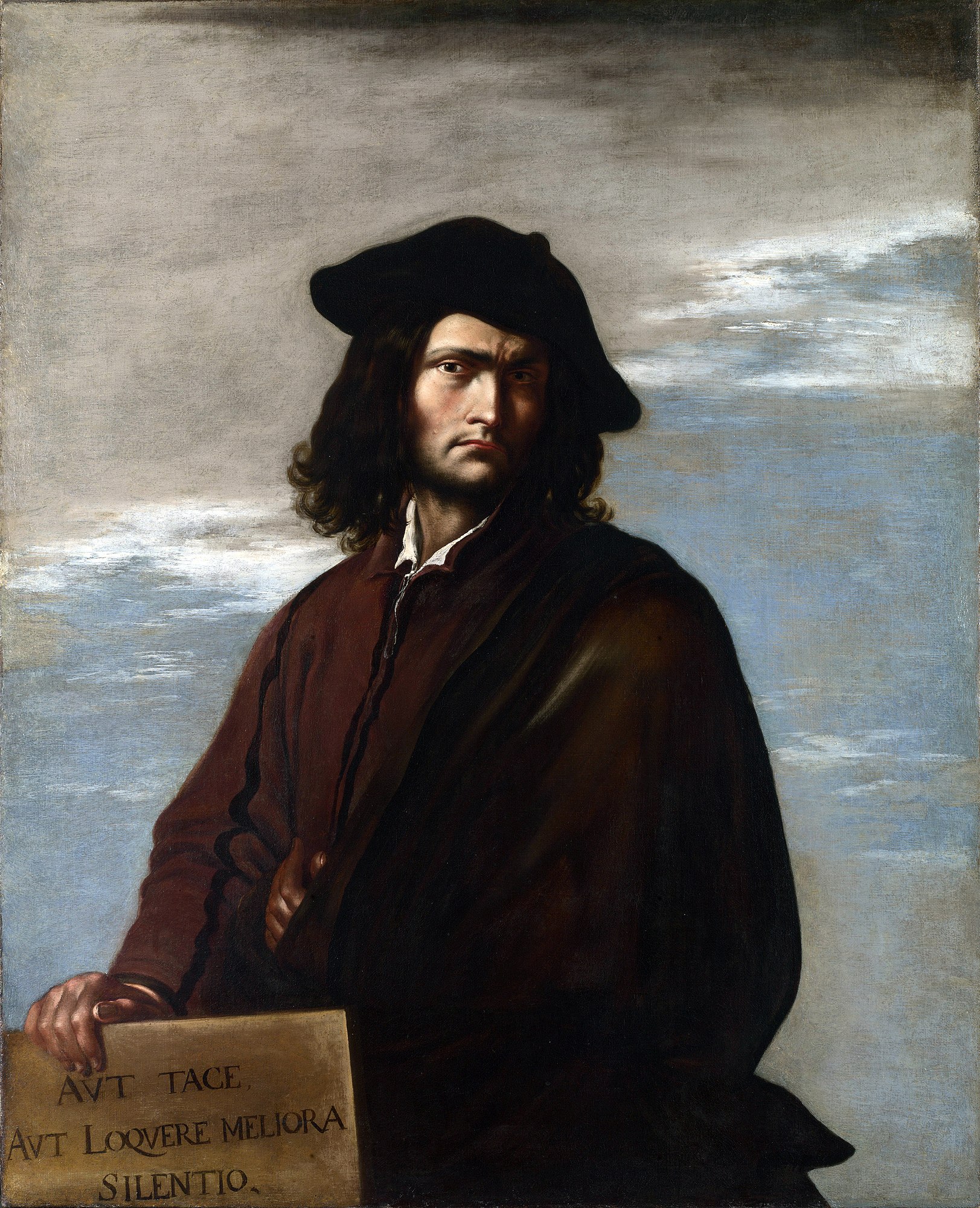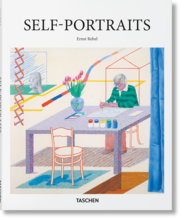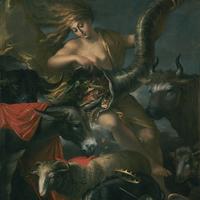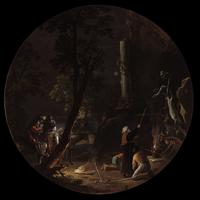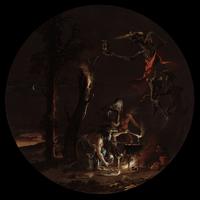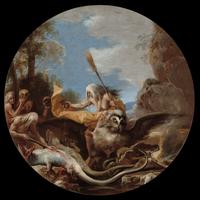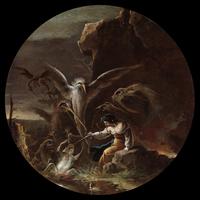More about Salvator Rosa
- All
- Info
- Shop

Contributor
Salvator Rosa possessed a rebel spirit, and he used it to make art unlike anything else being done in his time.
Rosa quickly became famous for his depictions of epic landscapes and seascapes, which many historians believe were inspired by the volcanic eruption of Mount Vesuvius in 1631. The eruption killed over 3,000 people, and it makes sense to think that this would inspire the dangerous landscapes Rosa composed throughout his life. He also painted large scenes of violent bandits, a real problem faced by citizens of the Spanish empire as they attempted to travel through the countrysides of Italy. Rosa depicted large scenes full of witches and sorcerers performing various methods of magic as well (a controversial and rebellious choice for an artist in the midst of the European witch craze). It’s unclear whether the paintings were serious or satirical in regard to witchcraft, but Rosa would denounce all three of these types of paintings later on in his life, saying that he only believed in the merits of historical and religious work. I have to call BS on this though, as Rosa sent countless letters throughout his life in regard to how genius his works were.
Rosa was born in 1615, and his father died when he was young. He grew up in a poor family, and even when he achieved later fame, he always remained critical of the wealthy. He famously pointed out the hypocrisy of the patron classes for purchasing paintings of homeless people but refusing to even look at them when they passed in the streets (a critique that still rings eerily true today).
He studied first in Naples under Jusepe de Ribera, before moving around Italy throughout his life. While in Florence, he was paid by Medici money and he founded his own pretentious circle of artists/writers/musicians who he referred to as the Accademia dei Percossi.
Rosa was a man of many talents and successfully dabbled in arts of all forms. The result was that he became a successful poet, actor, musician, and satirist. One enamored friend described his prowess as an actor saying, “Whenever he moves or speaks, he dislocates the audience's jaws.” In one instance however, Rosa played a satirical version of the renowned sculptor Bernini, who never forgave Rosa for his scathing imitation. They went on to become enemies from that point forward.
Throughout his life, Rosa remained incredibly stubborn and Romantic about his art. He refused to work on commissions or decide on prices before a piece was complete. This passion and resolve to be himself fueled his completely unique work up until the last decade of his life when he contracted malaria. He then moved to Rome where he shifted his subject matter from witches, bandits, and foreboding nature to more historical and religious works.
Sources
- Britannica Academic, s.v. "Salvator Rosa," accessed February 4, 2019, https://academic-eb-com.libproxy.newschool.edu/levels/collegiate/articl….
- Hall, James. "Salvator Rosa at Dulwich Picture Gallery." The Guardian. September 10, 2010. Accessed February 04, 2019. https://www.theguardian.com/artanddesign/2010/sep/11/salvator-rosa-pain….
- "Salvator Rosa (Italian, 1615 - 1673) (Getty Museum)." The Photography of Ray K. Metzker and the Institute of Design (Getty Center Exhibitions). Accessed February 04, 2019. http://www.getty.edu/art/collection/artists/466/salvator-rosa-italian-1….
Featured Content
Here is what Wikipedia says about Salvator Rosa
Salvator Rosa (1615–1673) is best known today as an Italian Baroque painter, whose romanticized landscapes and history paintings, often set in dark and untamed nature, exerted considerable influence from the 17th century into the early 19th century. In his lifetime he was among the most famous painters, known for his flamboyant personality, and regarded as an accomplished poet, satirist, actor, musician, and printmaker, as well. He was active in Naples, Rome, and Florence, where on occasion he was compelled to move between cities, as his caustic satire earned him enemies in the artistic and intellectual circles of the day.
As a history painter, he often selected obscure and esoteric subjects from the Bible, mythology, and the lives of philosophers, that were seldom addressed by other artists. He rarely painted the common religious subjects, unless they allowed a treatment dominated by the landscape element. He also produced battle scenes, allegories, scenes of witchcraft, and many self portraits. However, he is most highly regarded for his very original landscapes, depicting "sublime" nature: often wild and hostile, at times rendering the people that populated them as marginal in the greater realm of nature. They were the very antithesis of the "picturesque" classical views of Claude Lorrain and prototypes of the romantic landscape. Some critics have noted that his technical skills and craftsmanship as a painter were not always equal to his truly innovative and original visions. This is in part due to a large number of canvases he hastily produced in his youth (1630s) in pursuit of financial gain, paintings that Rosa himself came to loathe and distance himself from in his later years, as well as posthumously misattributed paintings. Many of his peopled landscapes ended up abroad by the 18th century, and he was better known in England and France than most Italian Baroque painters.
Rosa has been described as "unorthodox and extravagant", a "perpetual rebel", "The Anti-Claude", and a proto-Romantic. He had a great influence on Romanticism, becoming a cult-like figure in the late 18th and early 19th centuries, and myths and legends grew around his life, to the point that his real life was scarcely distinguished from the bandits and outsiders that roamed the wild and thundery landscapes he painted. By the mid 19th century however, with the rise of realism and Impressionism, his work fell from favor and received very little attention. A renewed interest in his paintings emerged in the late 20th century, and although he is not ranked among the very greatest of the Baroque painters by art historians today, he is considered an innovative and significant landscape painter and a progenitor of the romantic movement.
Check out the full Wikipedia article about Salvator Rosa

